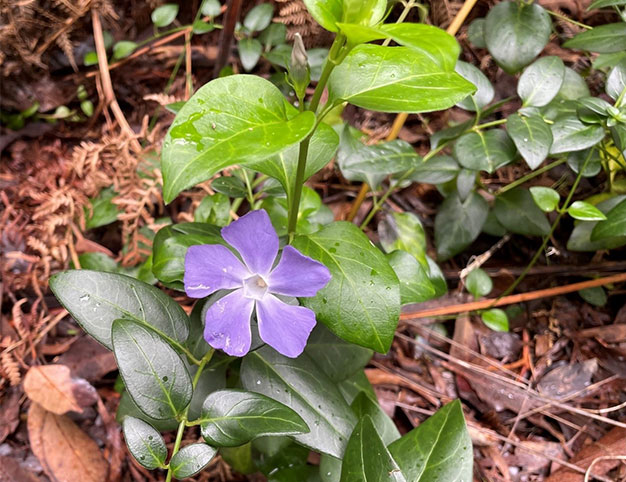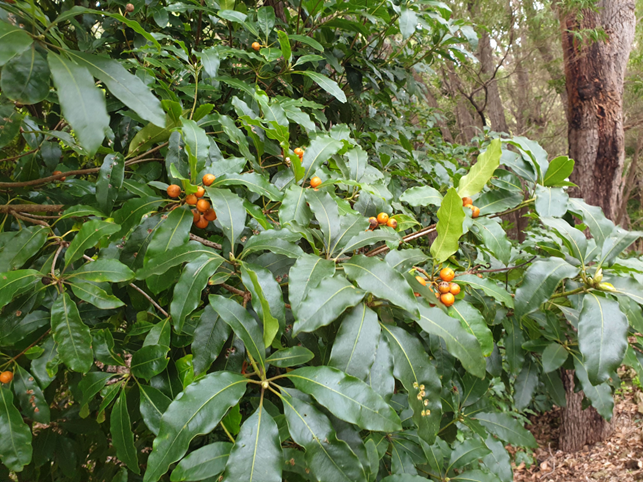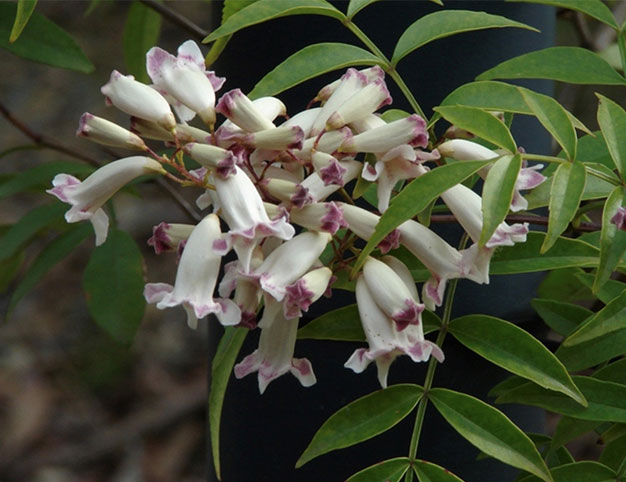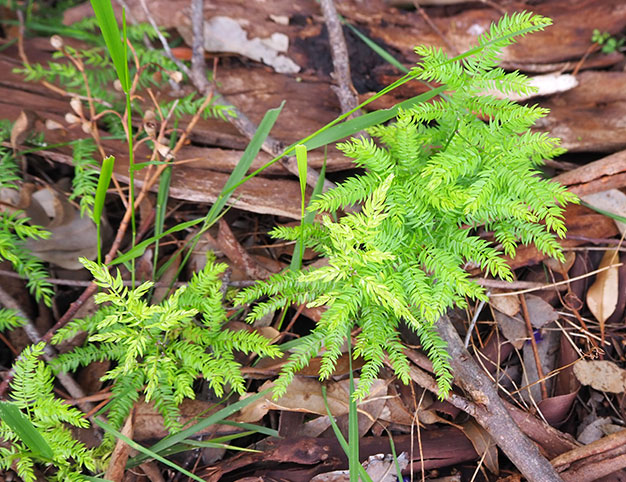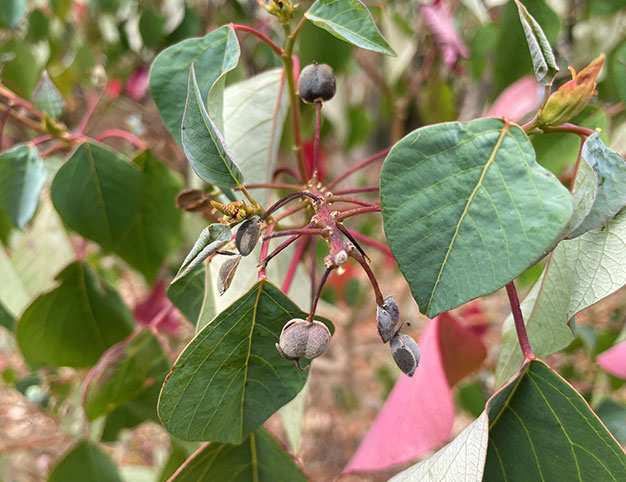Pandorea sp
Common name: Wonga Vine, Bower Vine, Pandora Vine
There are several species of weedy Pandora Vine. Introduced as a garden plant, where it can also be a pest, this very vigorous Australian wet or dry rainforest woody vine is emerging as a very serious environmental weed in our area. When established it can smother large areas of native bush and climb to the tops of the tall karris. Seeds are spread via wind or water and seedlings come up as thickly as grass over a large area, totally excluding indigenous species. Stems will also make roots where they touch the ground (layer), making a dense mat of vegetation that excludes all light and moisture, totally eliminating other vegetation.
Pandorea vines are evergreen, vigorous climbers with bright green foliage. One of the more common species, Pandorea pandorana (Wonga Vine) has cream to white or occasionally yellow, narrow bell shaped flowers, often flecked with red or dark brown inside, in late winter/spring. Another common species, Pandorea jasminoides (Bower Vine) has large, tubular flowers that are usually pale pink with a deep pink throat between spring and late summer.
A long lived plant, Pandorea sp. are tolerant of temperature extremes and drought and thrive when summer temperatures are higher.
More Information



